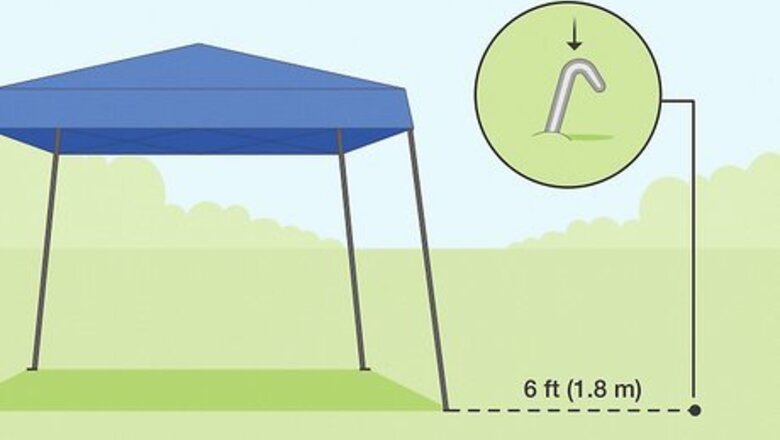
views
Securing the Tent with Anchor Ropes
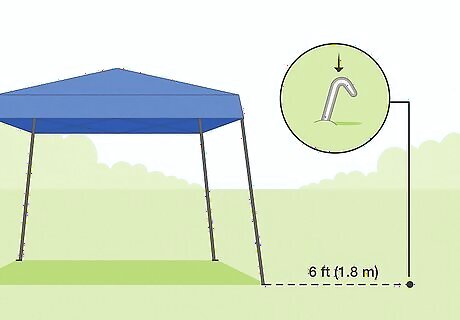
Drive metal stakes into the ground 6 ft (1.8 m) away from each pole of the tent. Use a hammer or mallet to pound stakes into the ground. Leave 3 to 4 in (7.6 to 10.2 cm) of the pins above the ground so you can easily tie the anchor ropes to them. Metal stakes can be purchased at hardware stores or specialty outdoor stores. Use a stake on each side of the tent at the corners for additional support. Only use this if you are tying your tent down in grass or dirt. If you are setting up your canopy tent on a hard surface, like concrete, you’ll have to weigh it down.
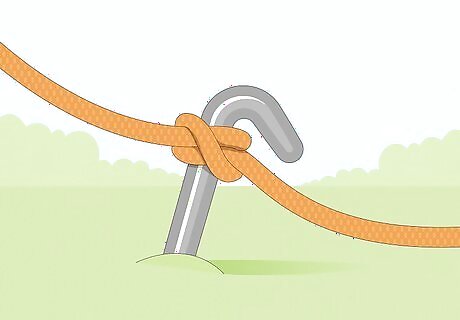
Make clove hitch knots with braided rope. Make 2 loops near the end of the rope so that the end of the left loop is on top of the rope and the end of the right loop is below the rope. Place the right loop over the left loop so they line up. Set the loops over the stake and pull each side of the rope to firmly tighten it. A clove hitch allows you to adjust the length of the rope easily without undoing the entire knot. Make knots at each of the stakes so the whole tent is secured.
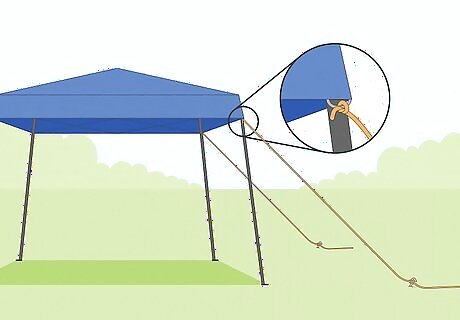
Tie the ends of the ropes to the frame of the tent. Sometimes, the frame will have an anchor to tie the rope to. If not, tie it directly to the horizontal frame at the top of the canopy right next to the support pole. You can use another clove hitch knot or make an overhand knot.
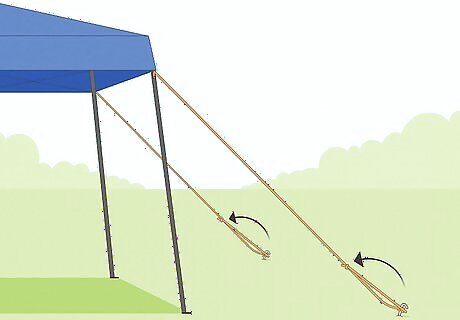
Tie the excess rope around the taut rope close to the stake. Loop the loose end of the rope around the rope pulled taut, making sure the end of the rope goes through the loop. Pull it tight so the excess is taut against the anchor rope. Keep the excess rope up so no one trips or gets tangled up.
Anchoring Your Canopy with Stakes
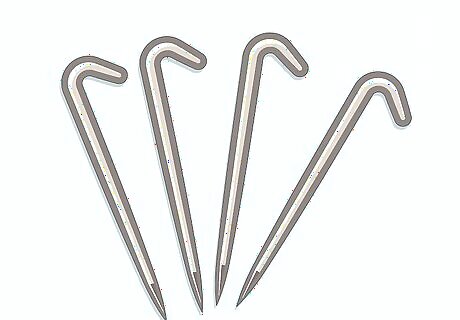
Use a heavy-duty metal stake for each tent pole. Most canopies will include the stakes that should be used. If not, purchase a number of T-shaped metal stakes equal to the number of poles on your tent. Metal stakes can be purchased at hardware or outdoor goods stores.
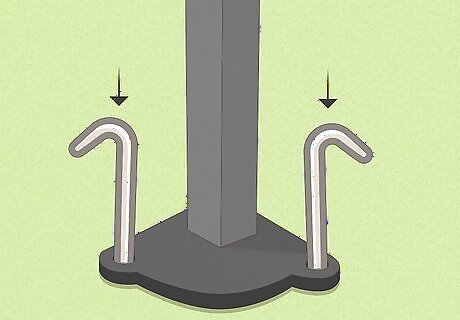
Drive the stake into the ground through the hole in the tent leg. Place the sharp point of the stake through the hole at the bottom of the tent leg. Use a rubber mallet to pound the stakes completely into the ground. If you have sandy or loose soil, stakes will not hold the canopy secure.
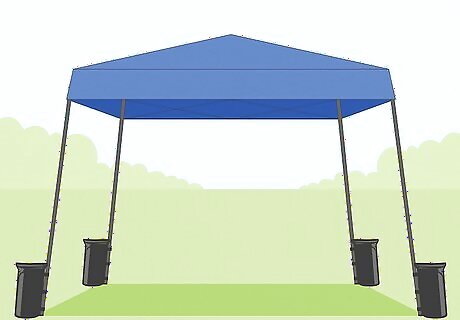
Place sandbags or weights on the legs for added support. Use weights that are at least 20 pounds (9.1 kg) on each leg of your canopy. Though the stakes will hold tightly during small gusts of wind, they may loosen and pull out of the ground during stronger winds. Sandbags can be purchased at hardware stores. Use dumbbells or other weights from home to save money.
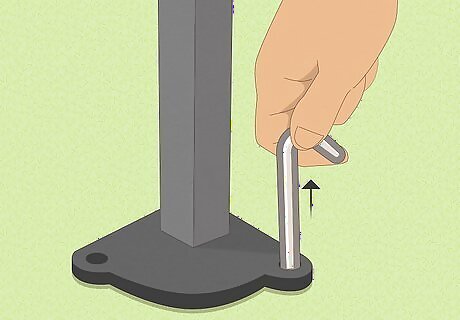
Pull the stakes from the ground to remove them. Grab the top of the stake with your hand and pull it straight up. You may have to wiggle it slightly back and forth to loosen it. Remove the stakes from each leg before you tear the canopy down. Some mallets have a stake hook on the ends of their handles to easily get leverage on the stake.
Making Weights with Large Buckets
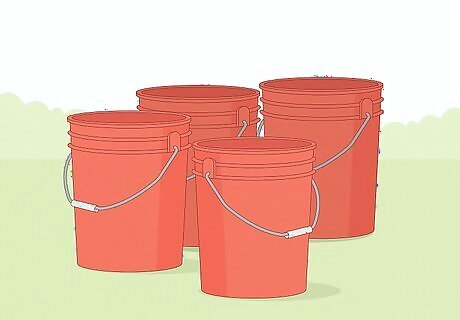
Purchase 4 buckets at least 5 US gal (19 L) in size. Find buckets that have handles so you can easily carry them and so you have a place to the the ropes. Keep the buckets empty until you get to the location of your tent. Large buckets can be purchased from hardware stores. If you want added support for your tent, purchase 4 more buckets and use 2 at each corner.
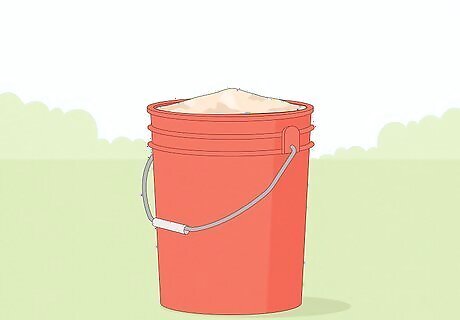
Fill each bucket with sand or water. Aim to have 40 pounds (18 kg) of material in each of your buckets. This will firmly hold the tent in place without any worry of it moving. If you’re using sand, you only have to fill it two-thirds of the way full to reach the required weight. If you use water, fill the bucket to the top. Mix concrete in the buckets if you want to make permanent weights, though this will make it heavier and more difficult to transport them.
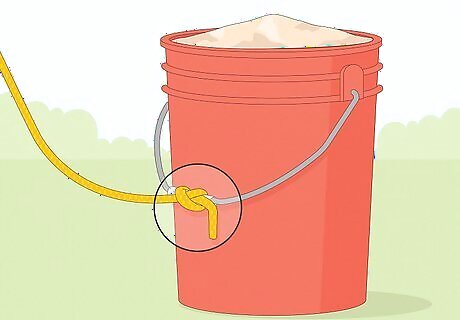
Use an overhand knot to tie braided ropes to the bucket handles. Wrap the end of the rope around the handle and push the tip of the rope through the loop. Pull the knot tight so it is completely secured. If you want added security, make another overhand knot so it is completely tight. If you don’t have handles on your bucket, wrap the rope around the middle of the bucket twice and tie a knot to secure the rope.
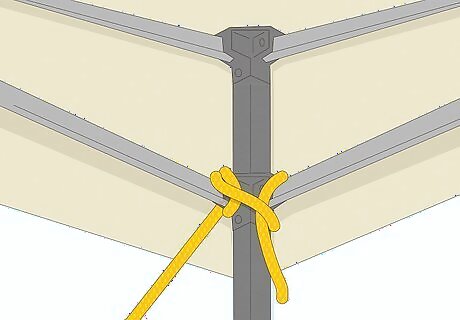
Tie the other end of the rope to the frame of the tent at each corner. Attach the other end of the rope to the horizontal frame at the top of the tent. Wrap the rope around the corner leg as well as the frame to keep the structure sturdy. Use a clove hitch or overhand knot to tie the rope to the frame.
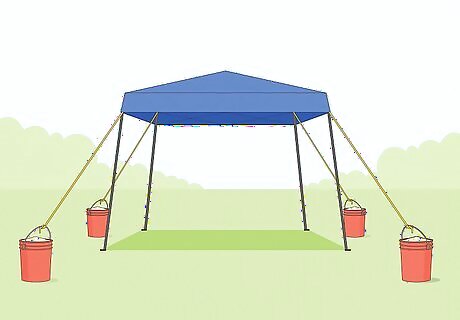
Move the buckets diagonally away from the corners until the ropes are taut. Lift the buckets and slowly work them away from the tent. Don’t move too fast or else you may move the tent as well. Placing the buckets at diagonals will ensure that the whole tent is supported evenly. Keep the buckets even with the outer edge of the tent if you’re using 2 buckets in each corner.




















Comments
0 comment